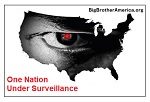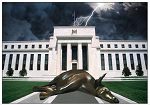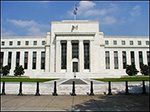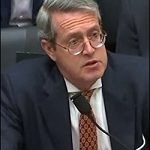-
Recent Posts
- Trump’s “Big Beautiful Bill” Is a Grotesque Giveaway to Fossil Fuel Billionaires While Adding $3.3 Trillion to Nation’s Debt
- Senator Chris Murphy Charges that Trump “Has Opened a Channel for Bribery”
- Congressman Casten: Trump’s Assault on the Rule of Law Is Causing Capital Flight Out of U.S. by Foreign Investors
- Trump’s Approval Rating Drops to 80-Year Low; IMF Says U.S. Tariffs Now Exceed the Highs During the Great Depression
- Nasdaq Has Lost More than 3,000 Points Since Trump’s First Full Day in Office in 2025; the Pain Has Barely Begun
- The Bond Crisis Last Week Was a Global No-Confidence Vote in U. S. President Donald Trump
- Trump’s Tariff Plan Guts $5 Trillion in Stock Value in Two Days; Senator Warren Calls for Emergency Action Before Markets Open on Monday
- Trump’s Attacks on Big Law, Universities, and the Media Have a Common Goal: Silence Dissent Against Authoritarian Rule
- Trump Administration Gives All Clear to Laundering Money through Shell Companies and Bribing Foreign Officials
- Four Megabanks on Wall Street Hold $3.2 Trillion in Uninsured Deposits – Which May Explain Senator Schumer’s Pivot to the GOP to Stop a Government Shutdown
- Here’s What Came Crashing Down Yesterday for Trump’s “Genius” Guy, Elon Musk: Tesla Stock, Access to Twitter (X), His Years of Secret Calls with Putin
- After Banning the Associated Press, Trump Is Now Targeting Specific Journalists That He Wants to See Fired
- Closely Watched Atlanta Fed Model Predicts Negative U.S. Growth in First Quarter
- Trump’s Gangster Diplomacy Makes Front Page Headlines Around the Globe
- Who Benefits Alongside Elon Musk If He Succeeds in Killing the CFPB: the Megabanks on Wall Street that Underwrite His Tesla Stock Offerings
- In Trump 1.0, the State Department Used Taxpayer Money to Publish a Book Elevating Elon Musk to a Superhero; It Was Funded by USAID, the Agency Musk Wants to Quickly Shut Down
- News Host Joy Reid Raises Threat of Trump Selling U.S. to Putin; Ten Days Later Her Show Is Cancelled
- Elon Musk’s DOGE Appears to Be Violating a Court Order; It Has Taken Down Hundreds of YouTube Videos that Educate Americans on How to Avoid Being Swindled
- Barron’s Releases Audio of Jamie Dimon Cursing Out His Workers at a Town Hall, as Dimon Plans to Dump Another One Million JPM Shares
- There’s One Federal Investigative Agency that Neither Trump nor Elon Musk Can Touch: It Just Opened an Investigation into DOGE
- Elon Musk’s Companies Were Under Investigation by Five Inspectors General When the Trump Administration Fired Them and Made Musk the Investigator
- Donald Trump Gives the Greenlight to Goldman Sachs and JPMorgan Chase to Return to Bribing Foreign Officials
- After Tech Geeks Built a Back Door to Loot Billions from FTX, Republicans Refuse to Investigate What Elon Musk’s Tech-Squad Did Inside the U.S. Treasury’s Payment System
- Former Prosecutor, Now U.S. Senator, Informs Tesla That CEO Musk May Be Violating Federal Law and to “Preserve All Records”
- Trump’s Hedge Fund Guy Is Now Overseeing the U.S. Treasury, IRS, OCC, U.S. Mint, FinCEN, F-SOC, and the Consumer Financial Protection Bureau
- As Elon Musk Begins Shutting Down Payments to Federal Contractors, a Strange Money Trail Emerges to His Operatives Inside the U.S. Treasury’s Payment System
- JPMorgan Chase Charged by Yet Another Internal Whistleblower with Cooking the Books
- We Asked Google’s AI Search Model, Gemini, Questions About the Fed and Wall Street Megabanks: It Got the Answers Dead Wrong
- With Trump and Melania’s Crypto Coins Likely to Raise Legal Challenges, Why Didn’t Trump Fire the SEC’s Inspector General in His Purge of IGs?
- Fossil Fuel Industry Could End Up Paying Tens of Billions for LA Wildfires and Deceiving the Public on Climate Change for Decades
- It’s Being Called the Biggest Grift by a President in U.S. History: Trump and First Lady Launch their Own Crypto Coins
- Trump Plans to Install a Fracking CEO to Head the Energy Department and Declare a National Emergency on Energy to Gain Vast Powers
- Fossil Fuel Money Played a Role in the Los Angeles Fires and the Push to Install Pete Hegseth as Secretary of Defense
- When It Comes to Wealth Retention in Retirement, Concrete May Be the New Gold
- Wall Street Watchdog Warns “Clock Is Ticking on a Coming Catastrophic Financial Crash”
- Wall Street Is Sending the Same Message to Americans on Fossil Fuel Financing that It Sent on Cigarettes: Drop Dead
- In a Six-Week Span, this Dark Pool with a Curious Past Traded 3.7 Billion Shares
- Wall Street’s Lobby Firm Hired Eugene Scalia of Gibson Dunn to Sue the Fed for Jamie Dimon
- Postmaster General Louis DeJoy Made $561,051 in Compensation in 2024, as Mail Costs Spiked and Delivery Deteriorated
- Fed Chair Jay Powell Sends a Bold Message to Trump and Tanks the Dow by 1123 Points
- The Head of Fixed Income at T. Rowe Price Makes the Scary Case for the 10-Year Treasury to Spike to 6 Percent
- $663 Billion in Cash Assets Have Gone Poof at the Largest U.S. Banks
- Donald Trump to Ring Bell at New York Stock Exchange Today as Hit List Posters Appear in Manhattan Targeting Wall Street CEOs
- Trump Has a Slush Fund to Prop Up the Dollar – Will He Use It to Prop Up Bitcoin Instead?
- A CEO Assassination; a Billionaire Heiress/NYPD Commissioner; a Secret Wall Street Spy Center – Here’s How They’re Connected
- Despite More than 1600 Tech Scientists Signing a Letter Calling Crypto a Sham, Trump Names a Crypto Cheerleader for SEC Chair
- The Fed Rings a Warning Bell: Hedge Funds and Life Insurers Are Reporting Historic Leverage
- Trump’s Nominee for FBI Director, Kash Patel, Has Businesses Financially Intertwined with Trump
- Donald Trump Is at Risk of Getting Named in a Fossil Fuels Conspiracy Lawsuit
- Trump Is Having Difficulty Getting a Lawyer to Accept the Nomination for SEC Chair: Here’s Why
Search Results for: Federal Reserve
The Federal Reserve Has Its Own Police and Is Part of a Vast Surveillance Center – Should You Worry?

By Pam Martens and Russ Martens: June 15, 2020 ~ Without any Congressional hearings on the matter, the USA Patriot Act in 2001 bestowed on the 12 regional Federal Reserve banks domestic policing powers. While the Federal Reserve Board of Governors in Washington, D.C. is deemed an “independent federal agency,” with its Chair and Governors appointed by the President and confirmed by the Senate, the 12 regional Fed banks are private corporations owned by the member banks in their region. As settled law under John L. Lewis v. United States confirms: “Each Federal Reserve Bank is a separate corporation owned by commercial banks in its region.” In the case of the New York Fed, which is located in the Wall Street area of Manhattan, its largest shareowners are behemoth multinational banks, including JPMorgan Chase, Citigroup, Goldman Sachs and Morgan Stanley. So what the USA Patriot Act effectively did was to … Continue reading
The Federal Reserve Now Owns 15 Percent of the U.S. Treasury Market; At Its Current Rate, It Could Own the Whole Market in Less than Two Years

By Pam Martens and Russ Martens: March 28, 2020 ~ “The More I See Of The Moneyed Classes, The More I Understand the Guillotine.” ~ George Bernard Shaw According to the U.S. Treasury, as of February 29, 2020, there was $16.9 trillion in marketable U.S. Treasury securities outstanding. Of that amount, at the end of February, the Federal Reserve held $2.47 trillion or 14.6 percent – making it, by far, the largest single holder of U.S. Treasuries anywhere in the world. By this past Friday, the Fed’s ownership of the Treasury market had increased to $3.12 trillion. It had grown by an unprecedented $650 billion in one month’s time. And on March 23, the Fed announced that it would buy unlimited amounts of both Treasury securities and agency mortgage-backed securities “to support smooth market functioning.” But exactly how can a so-called “free market” function smoothly if the country’s own central … Continue reading
Stimulus Bill Allows Federal Reserve to Conduct Meetings in Secret; Gives Fed $454 Billion Slush Fund for Wall Street Bailouts

By Pam Martens and Russ Martens: March 26, 2020 ~ The U.S. Senate voted 96-0 late yesterday on a massive bailout of Wall Street banks versus a short-term survival plan for American workers thrown out of their jobs – and potentially their homes. The text of the final bill was breathtaking in the breadth of new powers it bestowed on the Federal Reserve, including the Fed’s ability to conduct secret meetings with no minutes provided to the American people. The House of Representatives has yet to vote on the bill. The bill provides specific sums that can be made as loans or loan guarantees to passenger airlines ($25 billion), cargo airlines ($4 billion), and loans and loan guarantees to businesses necessary to national security ($17 billion). But when it comes to the money going to the Federal Reserve and then out the door to Wall Street, the legislation says only … Continue reading
Federal Reserve Announces Unprecedented $1.5 Trillion in Loans to Wall Street Today and Tomorrow

By Pam Martens and Russ Martens: March 12, 2020 ~ Making the most unprecedented announcement in the history of Wall Street, the Federal Reserve Bank of New York announced today that it will be offering $500 billion in 3-month repo loans to its primary dealers (Wall Street trading firms) today at 1:30 p.m. That $500 billion comes on top of the $198.10 billion the New York Fed loaned the street in its morning repo operations. Tomorrow, the New York Fed said it will offer its primary dealers another $500 billion in a 3-month loan and another $500 billion in a one-month loan, bringing the two-day total to potentially more than $1.7 trillion being offered at super low interest rates. (The Fed will also offer its regular one-day loan of $175 billion tomorrow.) These are staggering, unprecedented sums being offered by the Fed while it simultaneously claims that the Wall Street … Continue reading
Federal Reserve to Offer $270 Billion in Loans to Wall Street Tomorrow

By Pam Martens and Russ Martens: March 11, 2020 ~ The little people in America will have to continue to wait to hear any concrete plans for their government to provide financial relief to them for business disruptions resulting from the coronavirus. But Wall Street banks and their sprawling trading desks got the word today that the Fed’s money gusher (repo loans) that began on September 17 of last year will offer them up another $270 billion in cold hard cash at unprecedented low interest rates tomorrow. The Fed announced that its 1-day emergency loans that it has been making each weekday will increase to as much as $175 billion a day beginning tomorrow; its 14-day loans, which will continue to be offered twice a week, will remain at the elevated amount of $45 billion; and the Fed will add three one-month loans of a whopping $50 billion each. The … Continue reading
Federal Reserve Admits It Pumped More than $6 Trillion to Wall Street in Recent Six Week Period

By Pam Martens and Russ Martens: January 6, 2020 ~ If the Federal Reserve was looking for a media lockdown on news about the trillions of dollars in cumulative repo loans it has funneled quietly to Wall Street’s trading houses since September 17 of last year, it could not have found a better cloud cover than Donald Trump. First the impeachment proceedings bumped the Fed’s money spigot from newspaper headlines. Then, this past Friday, as the Fed released its December meeting minutes at 2:00 p.m., with its highly anticipated plans to be announced for the future of this vast money giveaway to Wall Street, that news was ignored as the media scrambled to cover Trump’s “termination” of General Qasem Soleimani, the head of Iran’s Quds Force, which raised the immediate specter of a retaliatory strike against the U.S. by Iran. The Fed’s minutes revealed that after multiple expansions of this … Continue reading
Federal Reserve V.P. Grilled at House Hearing on Hundreds of Billions in Fed Loans to Wall Street

By Pam Martens and Russ Martens: December 5, 2019 ~ While the Democrats focused on the continuing predatory practices of U.S. banks and the Federal Reserve’s coziness with those same banks, three Republicans at yesterday’s House Financial Services Committee hearing delved into why the Federal Reserve is showering Wall Street’s trading houses with super cheap loans on the pretext that it’s simply part of the Fed’s routine monetary operations. Since September 17, the Federal Reserve, through its New York Fed branch, has been funneling hundreds of billions of dollars each week to Wall Street’s trading houses, intervening in what had been a private overnight lending operation (called repurchase agreements or repo loans) between banks and other financial institutions. Since September 17, the Fed loans have grown in both size and duration with some loans extended out as far as 42 days – suggesting to many on Wall Street that there … Continue reading
Federal Reserve Spokesman Explains How It Creates Money Out of Thin Air to Pump Out to Wall Street

By Pam Martens and Russ Martens: October 29, 2019 ~ On January 19, 2011, the Federal Reserve released a video on YouTube to quell the public uproar over its unaccountable money creation operations. The spokesman for the Fed in the video was their Senior Adviser at the time, Steve Meyer, now an Adjunct Professor of Finance at The Wharton School. The Fed was in the middle of its second round of quantitative easing (QE2) and Meyer states this: “The Fed will not keep buying large amounts of securities on an ongoing basis.” The Fed was so intent on conveying the “temporary” nature of its unprecedented actions that it put that statement by Meyer on the screen. (See screen shot above.) Meyer then immediately adds this about the Fed: “Its purchases are a temporary measure to help the economy recover.” But the Fed’s purchases were not temporary. On September 13, 2012 … Continue reading
Jeffrey Epstein Chaired a $6.7 Billion Company that Documents Suggest May Have Received a Secret Federal Reserve Bailout

By Pam Martens and Russ Martens: July 21, 2019 ~ According to a database created by The International Consortium of Investigative Journalists containing files leaked from the law firm Appleby, Jeffrey Epstein, who is under indictment as a sex trafficker and assaulter of underage girls, was the Chairman of Liquid Funding Ltd. from November 9, 2001 to at least March 19, 2007. The offshore business had been incorporated in Bermuda on October 19, 2000 and according to the Fitch ratings firm, it had $6.7 billion in outstanding liabilities in 2006. In a regulatory filing with the Securities and Exchange Commission in February 2003, Bear Stearns, the Wall Street investment bank that Epstein had resigned from under murky circumstances in 1981, confirmed that it was a 40 percent owner of Liquid Funding Ltd., writing as follows: “At November 30, 2002, the Company had an approximate 40% equity interest in Liquid Funding, Ltd. … Continue reading
Here’s Why You Can’t Trust the Federal Reserve’s Financial Stability Report

By Pam Martens and Russ Martens: May 16, 2019 ~ What the United States desperately needs is less Financial Stability Reports and actual financial stability – rather than the Wall Street Casino in drag as Federally-insured banks. The Office of Financial Research (OFR), created under the Dodd-Frank financial reform legislation of 2010, publishes a Financial Stability Report; the Financial Stability Oversight Council (F-SOC), also created under Dodd-Frank legislation, publishes an annual report to call attention to any emerging threats to financial stability; and, not to be left out, the Federal Reserve has decided it needs to have its own say in its own Financial Stability Report – ostensibly to make it appear that it’s on top of the threats emanating from its charges on Wall Street – which it decidedly is not. Another reason the Fed may want its own Financial Stability Report is to create the illusion that things … Continue reading

